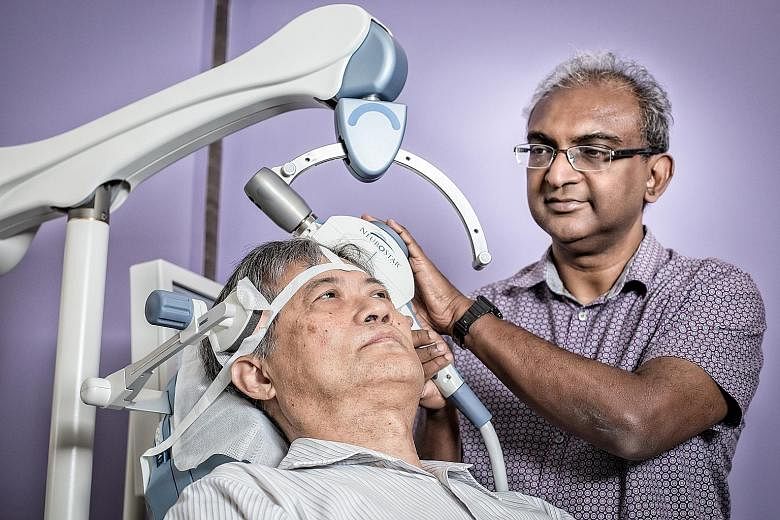Ms K is just 18 but has already tried various types of therapy over the past few years to keep her depression at bay.
"I didn't respond well to the drugs and those that I responded to had bad effects. I would fall asleep standing up," she said."If you are in a very low mood, it feels like someone is carving out pieces of your chest. The feeling can last all day."
Things started to look up recently after she underwent the latest treatment, repetitive transcranial magnetic stimulation (rTMS).
"After 20 sessions, I realised my mood didn't go down as much," said Ms K, who had completed 30 sessions. "It was easier to get out of bed, hold conversations with people and concentrate in school."
During a session, the patient sits on a chair that is similar to the one at the dentist, with a large electromagnetic coil placed over the head.
The electromagnet creates electric currents that stimulate nerve cells in the specific region of the brain involved in mood control and depression. The patient will be awake, and can read or watch TV. He will hear clicking noises and feel a tapping on a part of his head, which may be uncomfortable for some people.
After the treatment, he can return to work or drive home.
The challenge is in finding the motor threshold, or the best dose of energy needed to stimulate brain cells, as it varies from patient to patient, said Dr Munidasa Winslow, a psychiatrist, who had attended an 18-hour course at the United States headquarters of the rTMS device manufacturer to learn about the treatment. This threshold is determined at the start of treatment, and adjusted if needed. This new treatment is currently available only at the Winslow Clinic. The Institute of Mental Health (IMH) will be offering rTMS at the end of the year.
Each session lasts 37 minutes, and costs $350 at the Winslow Clinic. A patient typically requires 24 to 30 sessions, so the total cost for treatment can go up to $10,000.
A clear draw of the rTMS treatment is the mild side effects, if any.
"It is a safe procedure with few known adverse side effects. Common side effects include mild headache and temporary noise-induced deafness if hearing protection is not used during treatment," said Dr Tor Phern Chern, a consultant at IMH's department of general psychiatry.
A positive effect of rTMS that Dr Winslow has discovered is that "it takes away hallucinations".
He saw that in a 26-year-old man who has been battling schizoaffective disorder, which can include hallucinations and depression, since he was 20.
"After the first two or three weeks of treatment, he was less anxious and could go out with his family. After four weeks, he said his mood had improved and his hallucinations were not so loud, so we cut down on his medication," he said.
In rare cases, rTMS may induce seizures and mania, so the treatment should be administered by a trained psychiatrist, said Dr Tor.
As rTMS is relatively new, studies on it continue to be done.
"Patients come in and they will say, zap my brain. They want a miracle cure," said Dr Winslow.
But there are no miracles. "We are taking it slow and building up our expertise in this area," he said.


